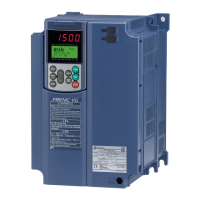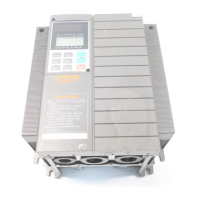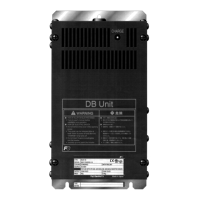5.3 Description of Function Codes
5-244
F23, F24
Starting frequency, Starting frequency (Holding time)
F25, F39
Stop frequency, Stop frequency (Holding Time)
Set the starting frequency and stop frequency as low as possible to the extent that the motor can generate enough
torque.
During master-follower operation, basically set the holding times for the starting frequency and stop frequency at
0.0 s.
Running at a frequency lower than the stop frequency or starting frequency the master cannot be followed.
Be careful that specifying the holding time deteriorates the following capability at the time of startup or stop.
F42
Drive Control Selection 1
To perform master-follower operation, select a control mode with speed sensor (F42 = 3, 4 or 6).
Usually, select “V/f control with speed sensor” (F42 = 3).
d01 to d05
Speed Control
(Speed command filter, Speed detection filter, P (Gain), I (Integral time), FF(Gain))
These function codes set up the speed control response. Refer to d01.
d14 to d17
Feedback Input
(Pulse input format, Encoder pulse resolution, Pulse scaling factor 1, Pulse scaling factor 2)
These function codes specify the speed feedback input under vector control with speed sensor (F42 = 3, 4 or 6).
Refer to d14 to d17
d59, d60
d62, d63
Command (Pulse train Input)
(Pulse input format, Encoder pulse resolution, Pulse scaling factor 1, Pulse scaling factor 2)
These function codes specify the command frequency to apply to the inverter. The setting items are the same as
for feedback input (d14 to d17).
Refer to F01.
d61
Command (Pulse train Input)
(Filter time constant)
d61 specifies a filter time constant for pulse train input. Choose an appropriate value for the time constant taking
into account the response speed of the machinery system since a large time constant slows down the response.
When the reference frequency fluctuates due to small number of pulses, specify a larger time constant.
d71
Master follower operation (Main speed regulator gain)
d71 adjusts the main speed regulator gain to control the response and the steady-state deviation. Usually, it is not
necessary to change the factory default.
Selecting simultaneous start synchronization without Z phase compensation (d41 = 2) only enables the setting
made with d71.

